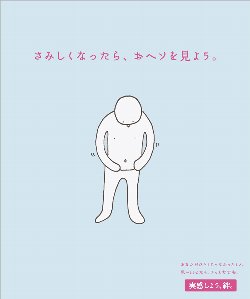|
The registration form
NSK News Bulletin Online
November 2009 -------------------------------------------------------------------
*Topics Newspaper Company Operating Profits Down 89% in Fiscal 2008 - - - - - - - - - - - - - - - - - - - - - - - - - - - - - - - - - - - - - - Story of the Month>>> Work Continues on Common Platforms for Digital Magazines, Newspapers ------------------------------------------------------------------- NSK held a ceremony at a Tokyo hotel on Oct. 20 to mark its 52nd annual Newspaper Advertising Day. The event drew a crowd of 396 people from newspapers, advertisers and ad agency circles. The ceremony in the Tokyo Prince Hotel at Tokyo°«s Shiba Park was held to announce and honor the winners of the 29th Newspaper Advertising Award and the fiscal 2009 Newspaper Advertising Creative Contest. The Creative Contest focuses on up-and-coming art creators and designers, both professional and amateur, for original and innovative works that expand the horizons of newspaper advertising. The prizewinners°« works are being featured in NSK member newspapers°« publication for as well as going on exhibit at the Japan Newspaper Museum (NEWSPARK) in Yokohama. The theme for this year°«s competition was °»Closer Link.°… The Oct. 20 ceremony honored five prizewinners. Takayuki Soeta, an art director, served as the deputy chairman of the selection committee. He told the gathering that each of the prize-winning works deserved commendation for its original perspective and positive message. He added that he had high hopes for the development of young creators who could carry on the legacy of Jun Maki, a noted art creator who died in June of this year. Maki used to serve as the chairman of this year°«s selection committee. Fujinari Tsutsumi, a creative director at Dentsu Inc.°«s Kansai branch, won the top prize. Tsutsumi said that he and two of his friends since school days had made it a rule to get together and enter the competition every year. °»I am very pleased to have our own °∆close link°« produce this result,°… he said.
Newspaper Advertising Creative Contest Top Prize Winner's Work
NSK Holds 62nd National Convention in Shizuoka City NSK convened its 62nd National Newspaper Convention at Shizuoka City Culture Hall in Shizuoka City on Oct. 15-16, drawing more than 500 executives and other officials of NSK member companies. The opening session on the first day of the conference featured an address by NSK Chairman Hitoshi Uchiyama. After his speech, the participants adopted a general resolution to renew their pledge to: °»Earnestly address the task of maintaining the newspaper as the most reliable news medium by continuing to use it to bring together the words of truth.°… The conference delegates also adopted a declaration on prompting proper newspaper sales activities by calling on all newspaper publishers and newspaper sales agents to join in promoting stronger sales activity nationwide. Kazuo Ichiriki, the owner and chairman of the Kahoku Shimpo, a regional newspaper based in Sendai City, Miyagi Prefecture, was honored as the recipient of the Newspaper Culture Award in a presentation ceremony for the winners of this year°«s NSK Awards. Kensuke Kosaka, an NSK vice chairman, said in an address at the opening session that: °»The summer general election gave the Democratic Party of Japan a landslide victory that has paved the way for a change in government. The public desire for reform is driving a major, historic change. It is now the ideal time for newspaper journalism to focus on delivering accurate information to the people and to serve as a vehicle for enlightening the public about the best options for the nation. Although we face a harsh business environment, I call on the participants at this conference to conduct a debate grounded in positive thinking.°… Jun Matsui, president of the Shizuoka Shimbun, the regional newspaper based in the host city of Shizuoka, told the delegates that in order for newspapers to accomplish their mission, they must maintain management stability as a key priority. °»In this context, I expect this conference to provide direction as to the approaches that the newspaper, as an institution, should take in this new era, as well as concentrating on the creation of a new business model for the newspaper industry. Akishige Tada, another NSK vice chairman, capped the meeting with an address in which he praised the participants for committing themselves to working together at a national conference on a matter as essential as prompting proper newspaper sales activities. In a vivid reflection of the state of the industry, the resolution that was passed on that subject was the first such motion adopted since the 47th NSK national convention, held in 1994, amid the collapse of Japan°«s so-called bubble economy. At the afternoon session of the opening day, Yoshiharu Fukuhara, the president of the Characters Culture Promotion Organization, and honorary chairman of major cosmetics maker Shiseido Co., delivered a keynote lecture on the mission of the newspaper. His presentation was followed by panel discussion among newspaper executives.
|
||||||||||||||
